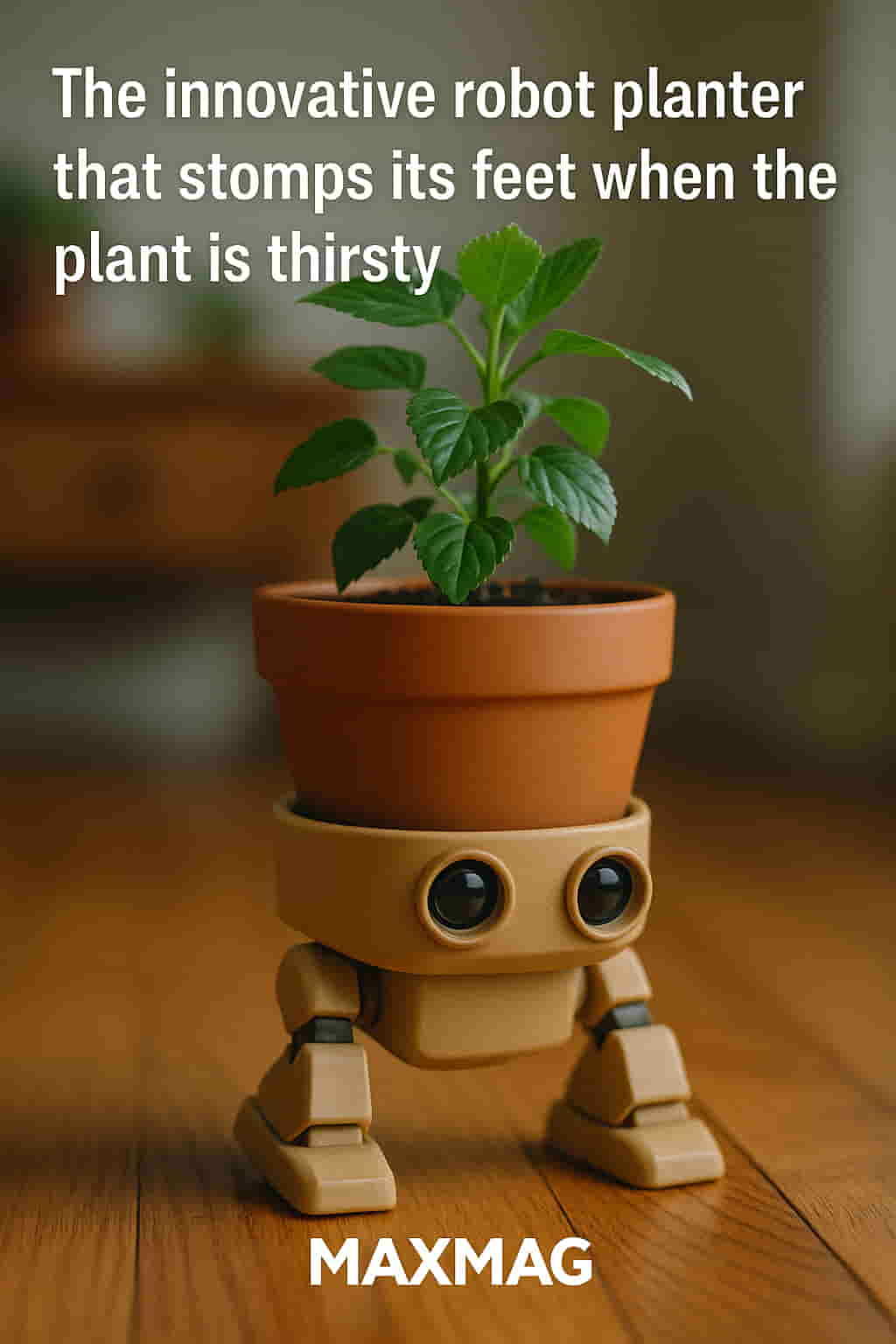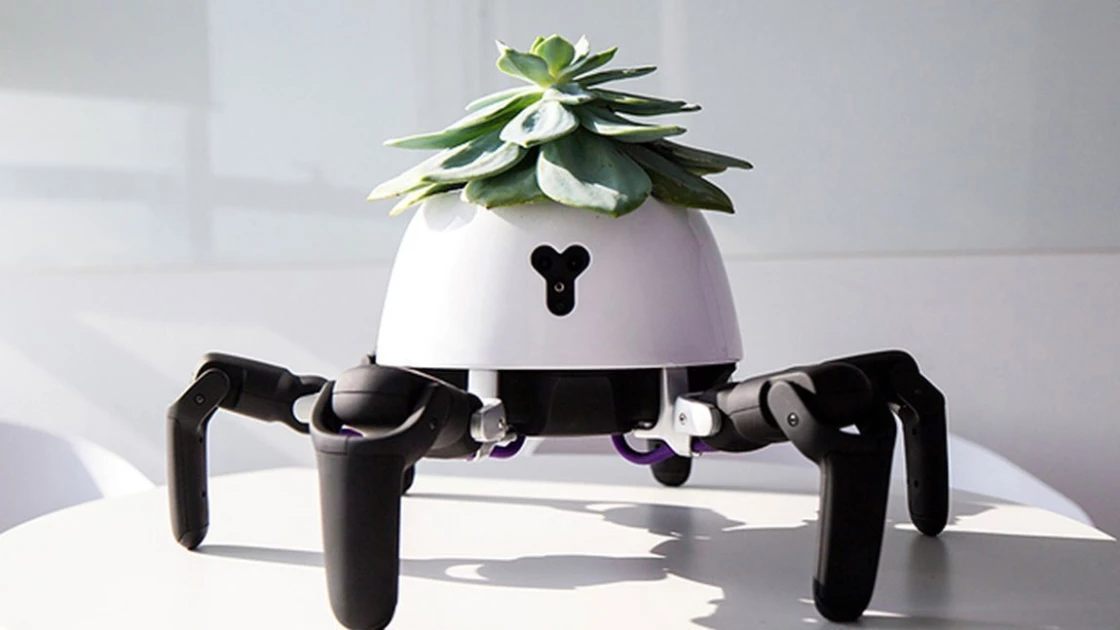
It might look like something out of a sci-fi film, but a new kind of plant caretaker is quietly taking root—literally. The robotic plant pot is not just a gadget for tech lovers or a gimmick for plant parents who forget to water. It’s part of a larger shift in how we think about sustainability, artificial intelligence, and daily life. In a world where smart homes are the norm and appliances can talk back, it’s no surprise that even our houseplants are getting a high-tech upgrade.
The idea of a self-aware planter—a pot that can move, think, and respond to the needs of the plant it holds—might sound far-fetched. But thanks to robotics engineers and innovators around the globe, it’s becoming reality. And it all started with a simple observation: What if plants could walk?
What is a Robotic Plant Pot?
A robotic plant pot is exactly what it sounds like—a flowerpot outfitted with robotic limbs, sensors, and computing power that can move to follow sunlight, seek shade, or alert its owner when it needs water. Unlike traditional pots that rely on passive placement and human memory, these smart containers take an active role in plant health.
Get the best of tech, movies, and culture from MaxMag — weekly.
SubscribeOne of the most striking examples comes from Chinese roboticist Tianqi Sun, who repurposed a six-legged robot named HEXA into a living plant’s personal chauffeur. Instead of just sitting idly on a windowsill, this planter can rotate, walk toward the sun, or even stomp its feet when thirsty. The pot mimics a living organism, reacting to its environment and adjusting accordingly.
This kind of innovation goes beyond novelty. For people living in dense urban spaces with limited natural light or erratic schedules, robotic plant pots offer real-world solutions to common indoor gardening challenges.
From Inspiration to Invention
Tianqi Sun was inspired during a 2014 visit to a flower show. He saw a sunflower slowly drooping because it was placed in the shade. The moment sparked a question in his mind: if plants naturally move toward the sun (a process called phototropism), why shouldn’t we help them along by giving them the ability to move?
Sun’s creation involved merging robotics with horticulture. By removing the original payload of the HEXA robot and installing a secure, lightweight pot in its place, he created a mobile plant habitat. The robot uses cameras, infrared sensors, distance meters, and a built-in algorithm to assess light conditions and navigate toward optimal locations.
When light is abundant, the pot moves into position. If too hot or too dark, it shifts again. When water levels drop, it gives a subtle but noticeable “tap” on the ground with its legs—a gentle reminder for its owner.
Why Smart Planters Are More Than Just a Trend
The rise of smart home technology is transforming how we interact with everything—from thermostats and refrigerators to security systems and now, plants. The robotic plant pot is part of this new generation of interactive tools designed to merge technology and biology.
Think of it as a cohabitant rather than a container. It doesn’t just hold the plant; it tends to it. For busy professionals, frequent travelers, or those who simply lack a green thumb, these smart pots offer peace of mind. They represent a small, manageable step toward a more sustainable and automated lifestyle.
Research from Statista predicts the global smart gardening market will exceed $1.8 billion by 2026. As more consumers seek convenient and eco-conscious ways to live, devices like robotic planters are expected to thrive.
The Tech Behind the Bot
Most robotic plant pots contain several core components:
-
Light sensors to detect optimal lighting conditions.
-
Moisture sensors to assess soil dryness.
-
Motors or robotic legs for movement.
-
Camera systems for navigation and obstacle avoidance.
-
Battery and charging unit, often wirelessly charged.
-
AI or rule-based software to process inputs and trigger responses.
Some even connect to smartphone apps, allowing remote monitoring of plant health or push notifications when intervention is needed.
An example from the U.S. is the Planty Smart Pot, which connects to Wi-Fi and uses four types of sensors to keep tabs on the plant. While not mobile like HEXA, it still automates care.
Meanwhile, labs at MIT and Stanford are experimenting with more advanced models that may incorporate machine learning to “understand” plant behavior better over time.
Other Examples of Smart Planters
Though robotic movement is the latest evolution, smart planters have existed for a while. Products like:
-
Parrot Pot – An early entrant with water tanks and sensors that automatically irrigate based on plant needs.
-
PlantPal – A Bluetooth-enabled soil monitor that communicates with mobile devices.
-
Véritable – An indoor garden with light and watering automation, perfect for herbs.
These devices laid the groundwork for more complex models. But none had the visual flair or interactive character of a truly mobile robotic plant pot like HEXA.
The Ethical and Emotional Side
Giving autonomy to objects typically perceived as static introduces philosophical questions: Is the robot the pet or the pot? Does caring for something that moves make us more engaged? Studies from the University of Washington have shown that people form emotional bonds with responsive objects, even if they know the behavior is programmed.
So when your planter taps the floor to ask for water or follows you around the house seeking sunlight, it begins to feel alive. That emotional engagement might encourage better plant care—or at least more consistent attention.
Environmental Benefits
Smart planters also have sustainability upsides. They:
-
Reduce water waste by using sensors to optimize watering cycles.
-
Minimize plant death, lowering plant and soil waste.
-
Encourage indoor greenery, which improves air quality and emotional well-being.
In larger-scale versions, these systems could revolutionize greenhouse agriculture or urban vertical farming. Engineers at the University of California, Davis are already developing mobile platforms that care for crops autonomously.
Challenges and Limitations
Of course, robotic plant pots aren’t perfect. Challenges include:
-
Battery life: Most mobile pots only last a few hours before needing a recharge.
-
Weight constraints: They can’t handle large or heavy plants.
-
Cost: Prototypes and early models are still expensive and not widely available.
-
Navigation issues: Indoor terrain can be unpredictable, and most bots can’t climb stairs.
Nonetheless, with tech miniaturization and better AI, these obstacles are likely to fade in the coming years.
How to Choose a Robotic Plant Pot
If you’re interested in buying a smart planter or a robotic version, here are features to prioritize:
-
Sensor variety – Light, moisture, and temperature sensors are essential.
-
Autonomy – Look for models that don’t just alert but take action.
-
Connectivity – Wi-Fi or Bluetooth integration with a user-friendly app.
-
Battery capacity – For mobile versions, longer battery life means less hassle.
-
Size – Make sure it suits the plant size you have in mind.
Some current smart planters worth checking include the Lua Plant Monitor, which uses emoji faces to communicate needs, and the Click & Grow Smart Garden 9 Pro, which uses AI and pods for easy setup.
Looking Ahead: What’s Next for Robotic Planters?
Experts foresee a time when robotic plant pots will be integrated into smart home ecosystems—talking to thermostats, adjusting lighting, even syncing with your schedule to suggest watering times.
Robotic farming is already a growing field. Miniaturizing that tech for home use is the logical next step. In 5–10 years, your houseplants may not just grow passively—they may move around to find their happy place, communicate their health status, and even offer feedback on their care routine.
And who knows? Your next roommate might be green, leafy—and fully autonomous.
FAQ
Q1: Can robotic plant pots be used outdoors?
Most models are designed for indoor use due to limited waterproofing and mobility.
Q2: Are they compatible with all plant types?
Generally suited for small, lightweight plants like succulents or herbs.
Q3: How do they alert the user when water is needed?
Via app notifications or physical signals like movement, tapping, or LED lights.
Q4: Are these pots noisy?
No, most use silent motors designed for home environments.
Q5: Where can I buy one?
Some smart planters are available through major retailers like Best Buy or Home Depot, while mobile robotic versions are often limited to tech startups or research prototypes.





